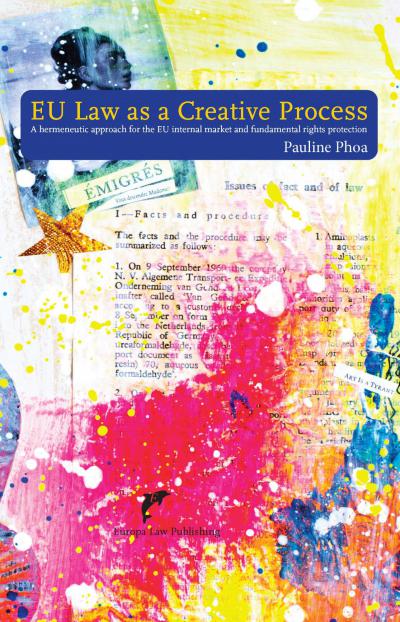Thoko Kaime’s 'The Convention on the Rights of the Child: A Cultural Legitimacy Critique' looks at the protection and promotion of children’s rights through a socio-legal examination of the provisions of the world’s pre-eminent children’s rights treaty, the Convention on the Rights of the Child. The book focuses on this singular question: Does the Convention provide a culturally appropriate framework for the protection and promotion of children’s rights across different cultures? In examining this question, the book argues that the effective protection of the rights of the child will not be achieved unless the substantive protections are perceived as culturally legitimate by local communities and unless the implementation procedures are aimed at enhancing such legitimacy as opposed to merely ensuring adherence to form. The book benefits from a methodology that fuses international law methods with grounded anthropological narratives. It demonstrates that far from being abstract paper prescriptions, children’s rights frameworks are but a species of social and cultural interaction and that effective promotion and protection strategies must be alive to this dynamic. The book is a useful introduction to cultural critiques of children’s rights, in particular; and, indeed human rights generally.
Thoko Kaime is Lecturer in Law in the School of Law at the University of Surrey and Senior Teaching Fellow at the School of Oriental and African Studies, University of London. He also serves as Deputy Director of the Environmental and Regulatory Research Group at the University of Surrey. He maintains broad interests in the area of public international law and the social critique of law and legal policy. He has written extensively and delivered lectures on children’s rights and their legal and social contexts, focusing on the intersection between law and legitimacy.
Preface
Acknowledgements
Contents
Chapter 1 Introduction
1 Background
2 Focus of the Book
3 General Approach
4 Significance
5 Scope
Chapter 2 The Birth and Development of Children’s Rights
1 Introduction
2 The Structural Basis of Children’s Rights at International Law
3 Universal Rights and the Struggle for Context
4 Documents Affecting Children’s Rights: An African Example
5 Emerging Questions
Chapter 3 Relativist and Universalist Debates
1 Introduction
2 The Concept of Culture and its Relevance for Children’s Rights
3 Cultural Legitimacy and its Relevance for Children’s Rights
4 Relativism, Universalism and Children’s Rights
4.1 Cultural Relativism and the Relevance of Cultural Context
4.2 Universalism and Human Rights
4.3 Mediating Between Universalism and Relativism
5 The Implications of the Debate for Children’s Rights
Chapter 4 Mapping Childhood and Children’s Rights
1 Introduction
2 The Concept of Children’s Rights
3 The Concept of Childhood
3.1 The Changing Nature of childhood
3.2 The Conception of Childhood: An African Example
4 The Relationship Between Childhood and Children’s Rights
4.1 The Image of Childhood at International Law
4.2 Children’s Rights and the Dominant Image of Childhood
4.3 Obstacles to the Export of the Dominant Conceptions of Childhood
4.4 The CRC and the Changing Image of Childhood
4.5 A New Image of Childhood?
5 Concluding Remarks
Chapter 5 Principles of General Application
1 Introduction
2 The General Principles and Cultural Context: The Basis for an Ethnographic Approach
3 Non-discrimination: Concepts, Context and Contests
3.1 Maybe Not Good but Justifiable: Analysing the Pro-Distinction Narratives
3.2 It is Not Part of Our Culture: An Inquiry into Non-Discrimination Discourse
4 Best Interests: Tracing the Contours of a Shadow-Less Concept
4.1 Lost in Translation? Conceptualising Best Interests
4.2 The Child’s Best Interests in Family Decision-Making
5 Survival and Development and the Interrelatedness of Children’s Rights
5.1 Children’s Survival and Development: Partnerships and Resource Networks
6 Participation: A Brief Introduction
6.1 Adaptation and Resistance: A Tale of Rudeness and Freedom
7 Concluding Remarks: Children’s Rights in Cultural Practice
Chapter 6 Cultural Legitimacy and the Implementation of Children’s Rights: Institutions and Process
1 Introduction
2 The Formal Protection of Children’s Rights
3 The Scope and Efficacy of the Legal Protection of Children’s Rights and the prospects for Cultural Legitimacy
4 From the Legal to the Local: Local Institutions and the Cultural Legitimacy 0f Children’s Rights
4.1 Key Local Institutions in Lomwe Country
4.2 The Clan
4.3 The Chief’s Court
4.4 The Boma or the District Commissioner’s Office
4.5 The Church
5 Local Institutions and the Potential for Children’s Rights Protection
6 Incorporating Local Institutions in the Implementation of Children’s Rights: Process and Prospects
7 Concluding Remarks
Chapter 7 Concluding Analysis
1 Introduction
2 Culture, Rights, the CRC and the Omnipresence of Change
3 Cultural Legitimacy and the CRC
4 Cultural Appropriation and the CRC
5 The CRC in Practice
5.1 Dissemination
5.2 Collaboration
5.3 Participation
5.4 Innovation
6 Concluding Remarks
Convention on the Rights of the Child
Bibliography
Table of Cases





















